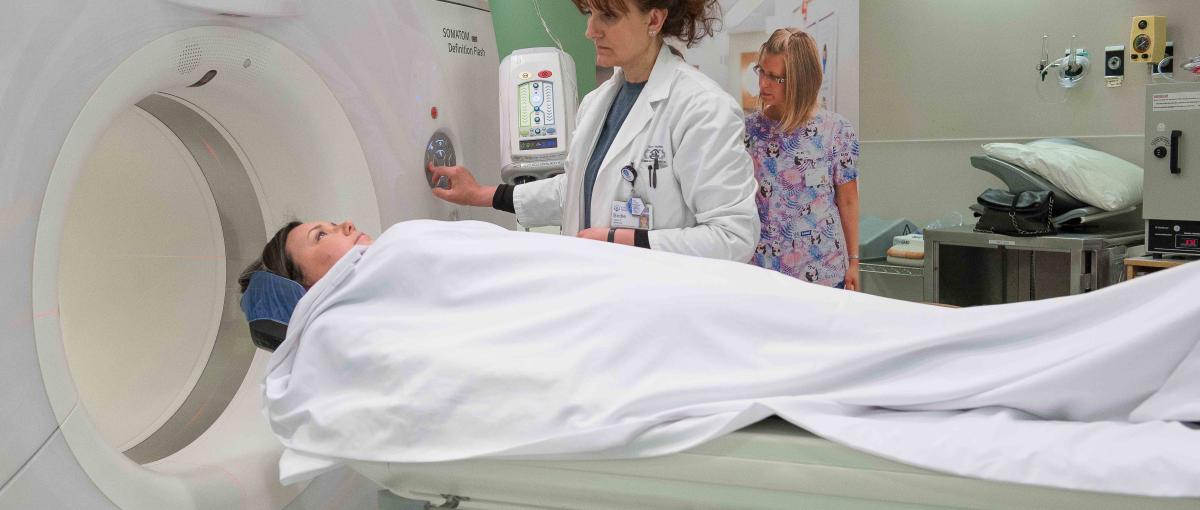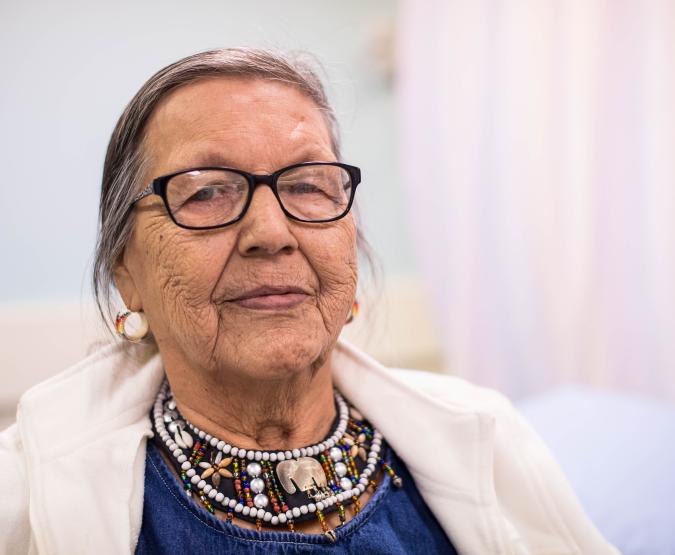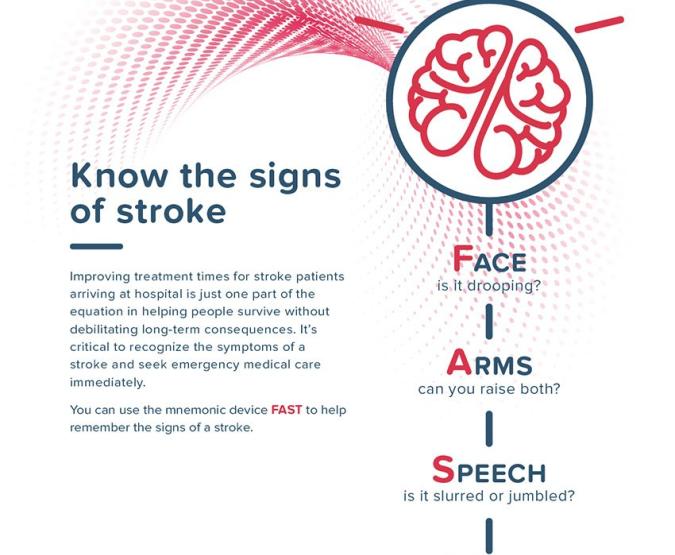Alberta hospitals lead world in treatment time for stroke patients
Shorter times resulting in excellent patient recoveries

March 20, 2017
By Rayne Kuntz, Senior Communications Advisor, Covenant Health
Florence Deschamps gets emotional when she recounts suffering a stroke in her home near Ma-Me-O Beach in February 2016. The 73-year-old woke up that morning with a pain in the back of her head, but continued to help her nine-year-old granddaughter get ready for school. “I thought the pain was the way I slept,” recounts Florence, but then suddenly she felt dizzy and collapsed. Her son Dale called the ambulance and she was rushed to the Grey Nuns Community Hospital.
“It has been really overwhelming for me because when I was in intensive care I thought I was going to die,” Florence says, her voice quavering. “The way they took care of me, what the doctors and nurses did, it wasn’t anything short of a miracle. I was able to move myself almost immediately.”
The Grey Nuns has the fastest door-to-needle time in the Edmonton region—on average 29 minutes—and holds the record for the quickest time in the province at six minutes. The stroke response team, made up of physicians and staff from the emergency department and diagnostic imaging, work together to give patients suffering from an ischemic stroke the clot-busting drug tPA (tissue Plasminogen Activator). There are 20 steps in the process before a patient receives the drug. Florence’s neurologist, Dr. Muzaffar Siddiqui, says she received tPA within 20 minutes.
“The minute a patient hits the door to when they leave—our team is very passionate about their care,” says Muzaffar. “These types of gratifying outcomes are what we aspire to.”
Door to needle times
During an ischemic stroke, in which blood supply to the brain is blocked, about two million brain cells die every minute and about 12 kilometres of neural connections are lost.
| Zone/Facility | Average door to needle time (Oct. 2016 – Dec 2016) | Fastest door to needle time since start of initiative |
|---|---|---|
| Provincial | 32 minutes | 6 minutes |
| Edmonton Zone | 32 minutes | 6 minutes |
| Grey Nuns Hospital | 29 minutes | 6 minutes |
Dale Saddleback says he was stunned by his mother’s recovery. The drug almost immediately restored movement to her left side.
“Science and technology have not always been best friends of Indigenous people—I was sure grateful it was there; it elongates our time with her,” says Dale.
For Florence, every day is a gift. She has been through a lot in her life and takes nothing for granted. She credits her family, her culture and faith, her determination and the care she received, particularly from Muzaffar.
“He was there when I first opened my eyes,” says Florence, wiping a tear from her eye. ”He never left me.”
“For my mother this is a heavy experience. We are very grateful,” says Dale. “You could almost feel love; we never experienced that before in other hospitals.”
Florence says she still needs some assistance with walking and has a little bit of drooping on the left side of her face when she is tired, but that isn’t stopping her from soaking up all the richness life has to offer.
Melissa Shiach is a mother of two who suffered a stroke in October 2015 when she was 33 years old. She went to the hospital in Fort Saskatchewan with stroke symptoms. After doctors there consulted with the Grey Nuns, she was rushed to Edmonton for treatment. She has now made a full recovery and is grateful for every day. “Even when I am doing something as simple with my kids as playing a card game or just sitting and cuddling and reading a story or watching a movie, I remember how close I came to losing all of that.”

Know the signs of stroke
Improving treatment times for stroke patients arriving at hospital is just one part of the equation in helping people survive without debilitating long-term consequences. It's critical to recognize the symptoms of a stroke and seek emergency medical care immediately.
You can use the mnemonic device FAST to help remember the signs of a stroke:
- Face: Is it dropping?
- Arms: Can you raise both?
- Speech: Is it slurred or jumbled?
- Time to call 9-1-1 immediately
